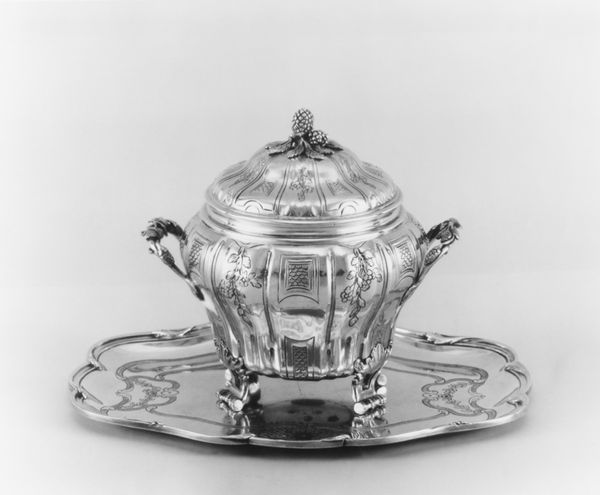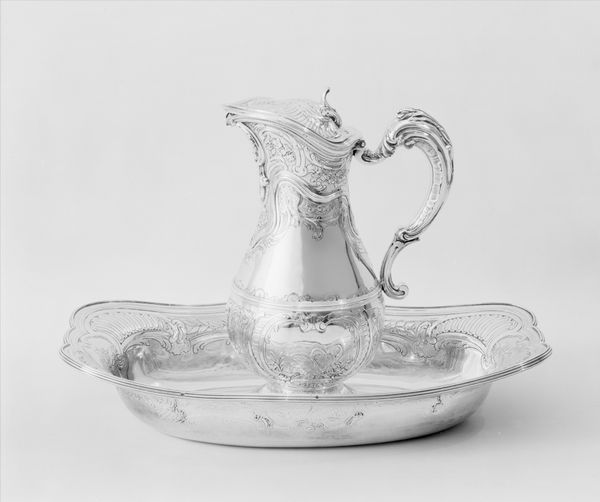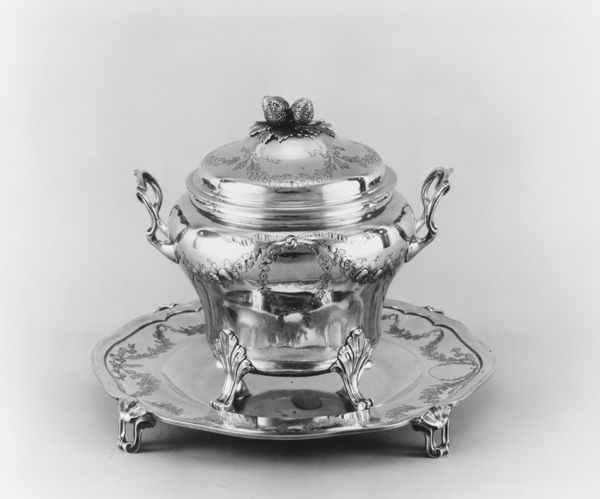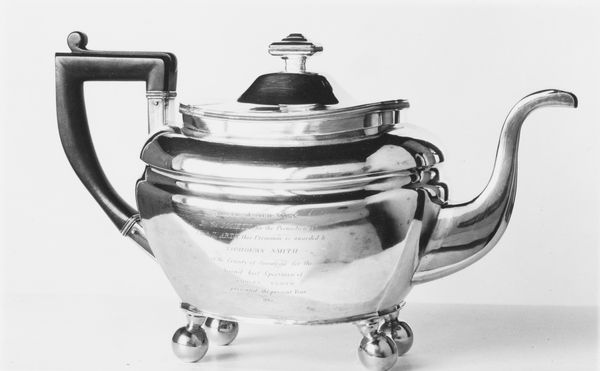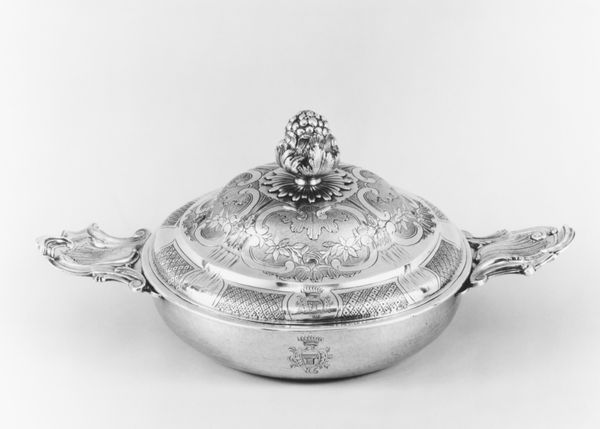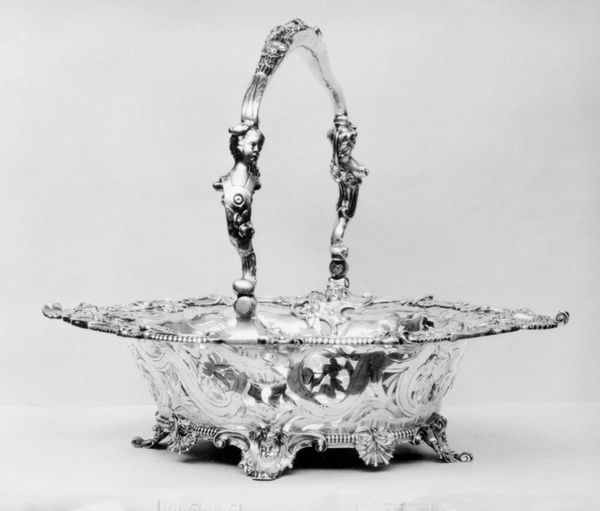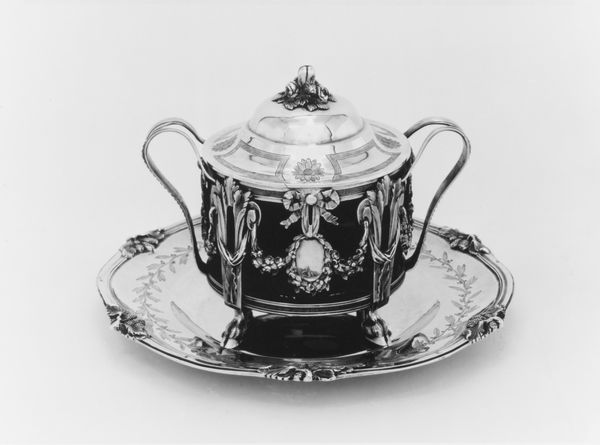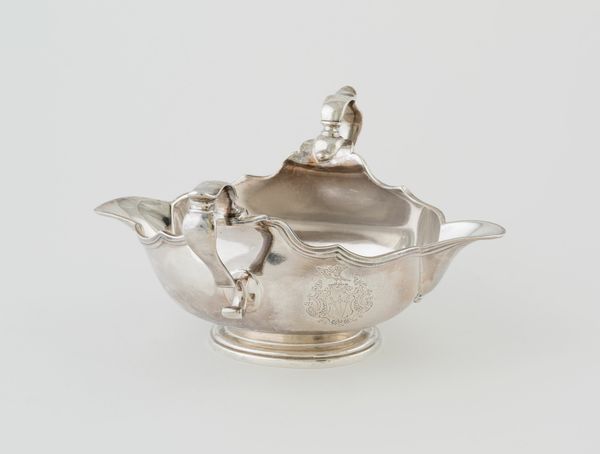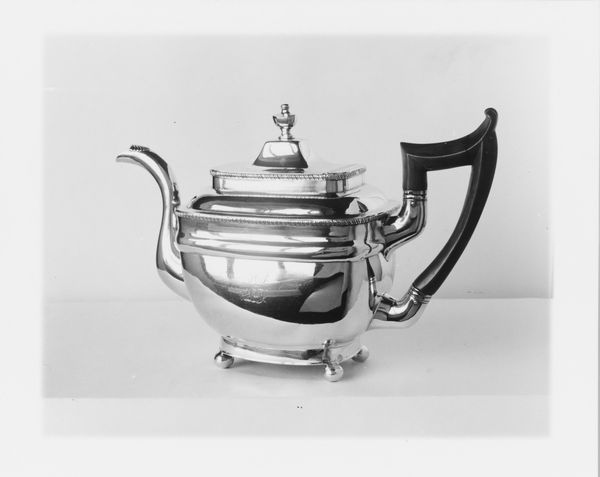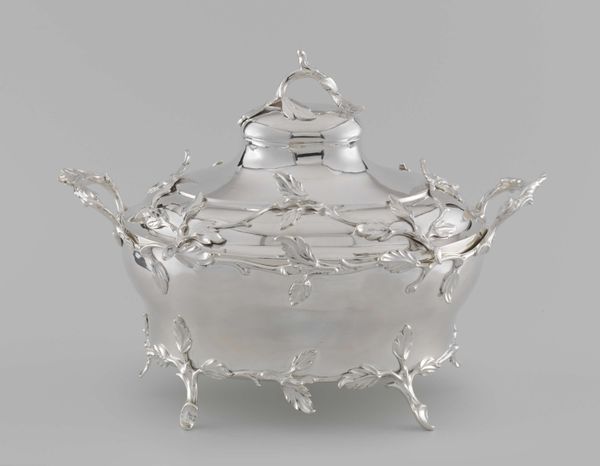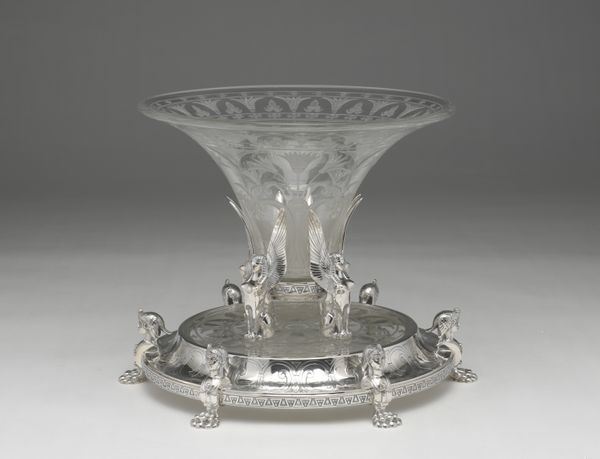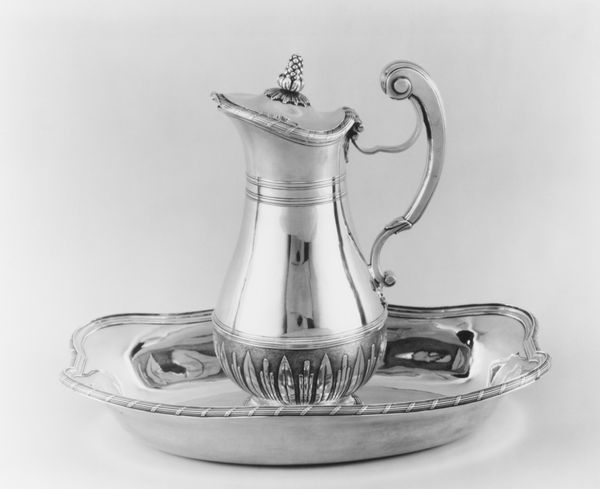
silver, sculpture
#
silver
#
sculpture
#
decorative-art
Dimensions: Overall (sauceboat .67): 4 11/16 × 6 1/4 × 8 1/8 in. (11.9 × 15.9 × 20.6 cm); Overall (stand .18): 1 1/2 × 8 × 12 1/8 in. (3.8 × 20.3 × 30.8 cm)
Copyright: Public Domain
Editor: We're looking at a "Sauceboat and Stand" made between 1769 and 1771 by Jean François Thébaud. It’s crafted from silver and the level of detail is striking, even dazzling. What stands out to me is its unapologetic display of wealth. What do you make of it? Curator: You're right to focus on its opulent nature. I see it as a potent symbol of the entrenched power structures of 18th-century Europe. These weren't just decorative objects; they were tools used to reinforce social hierarchies and perform displays of elite identity. Consider the labor and resources needed to produce this. Who had access, and who didn't? Editor: So, the artistry is almost secondary to the statement it's making? Curator: Not secondary, but inseparable. The artistry itself is a language of power. Think about the rococo style – the flourishes, the asymmetry, all signals of exclusivity. This sauceboat represents a system of economic and social injustice, where wealth was concentrated in the hands of a few, while many struggled. Does knowing this affect how you view its beauty? Editor: Absolutely. It's hard to ignore the history embedded in the object now. What once felt purely aesthetic, now feels… complicated. Curator: Precisely. It forces us to confront the ethical dimensions of art and its relationship to social inequality. We learn more when we situate the art piece in history. Editor: I never would have thought that a sauceboat could hold so much meaning. This definitely changes how I will view decorative art. Curator: And that shift in perspective is exactly why it is crucial to investigate art in its context.
Comments
No comments
Be the first to comment and join the conversation on the ultimate creative platform.
